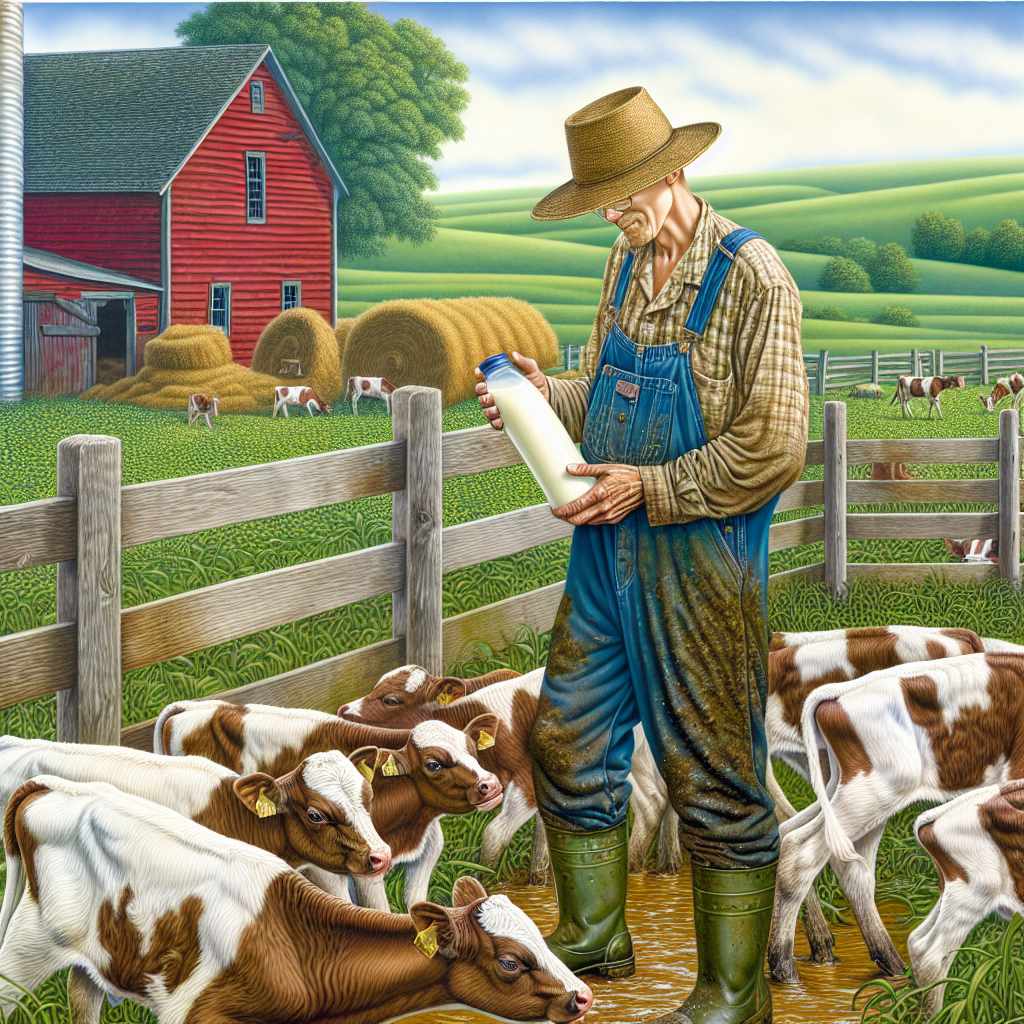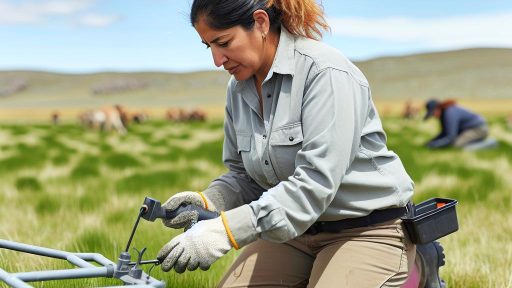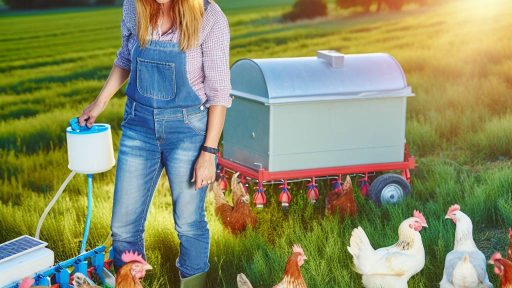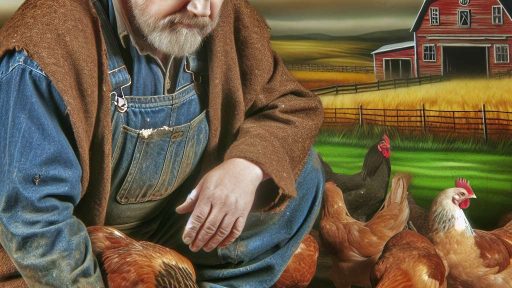Understanding the Importance of Calf Rearing in Dairy Production
The Role of Calves in Dairy Farming
Calves are the future of any dairy farm.
They are essential for herd replacement and production sustainability.
Furthermore, raising healthy calves contributes to overall farm profitability.
Impact on Dairy Production
Proper calf rearing techniques lead to higher milk yields.
Healthy calves grow into productive dairy cows.
This results in more efficient milk production systems.
Long-term Financial Benefits
Investing in calf health can reduce future costs.
Healthy calves often require less veterinary care later in life.
This contributes to better financial returns for farmers.
Improving Animal Welfare
Effective calf rearing prioritizes animal welfare.
It fosters a healthy and stress-free environment for calves.
This enhances their overall wellbeing and productivity.
Adopting Best Practices
Implementing best practices can optimize calf rearing processes.
Farmers should focus on nutrition, housing, and health management.
All these factors contribute to successful dairy farming.
Transform Your Agribusiness
Unlock your farm's potential with expert advice tailored to your needs. Get actionable steps that drive real results.
Get StartedSelecting the Right Breed for Optimal Calf Growth
Understanding Breed Characteristics
Calf growth largely depends on the breed’s genetic traits.
Some breeds grow faster while others excel in milk production.
It’s essential to choose a breed suited for your farm’s goals.
Popular Dairy Breeds
Holsteins are renowned for their high milk yield.
Jerseys are smaller but produce rich milk with higher butterfat content.
Brown Swiss are strong and well-adapted to various climates.
Each breed has unique advantages that farmers can leverage.
Assessing Farm Conditions
Your farm’s environment significantly impacts breed selection.
For example, certain breeds thrive better in colder climates.
Likewise, some breeds may require more pasture space.
Evaluate your farm’s resources before making a decision.
Nutritional Requirements
Different breeds have varied nutritional needs for optimal growth.
For example, Holsteins usually need more protein in their diet.
Understanding these requirements helps maintain health and productivity.
Consulting Experts
Engaging with livestock professionals can provide valuable insights.
Veterinarians and agronomists can guide you in breed selection.
Furthermore, attending agricultural conferences offers current trends and solutions.
Long-Term Considerations
Think about your long-term objectives when selecting a breed.
Consider factors like breeding programs and market demand.
Choosing the right breed today impacts future farm success.
Nutritional Requirements for Healthy Calf Development
Importance of Nutritional Needs
Providing proper nutrition is essential for calf growth and overall health.
Nutrition directly affects the calves’ immune function and disease resistance.
Healthy calves are more productive dairy animals in the long run.
Key Nutrients for Calves
Calves require specific nutrients to thrive and develop properly.
Showcase Your Farming Business
Publish your professional farming services profile on our blog for a one-time fee of $200 and reach a dedicated audience of farmers and agribusiness owners.
Publish Your ProfileThese nutrients include proteins, carbohydrates, fats, vitamins, and minerals.
Each nutrient plays a crucial role in their development.
Proteins
Proteins are vital for muscle development and overall growth.
High-quality protein sources boost growth rates significantly.
Ensure calves receive adequate protein from milk replacers and solid feeds.
Carbohydrates
Carbohydrates provide energy necessary for growth and activity.
Include grains and forages to meet their carbohydrate needs.
These energy sources help maintain optimal health as calves mature.
Fats
Fats are energy-dense and important for overall health.
Incorporate fats into their diet for better energy levels.
Use fat supplements responsibly to enhance overall nutrition.
Vitamins and Minerals
Vitamins and minerals support a range of bodily functions in calves.
Key vitamins include A, D, and E, critical for health and growth.
Minerals like calcium, phosphorus, and magnesium are equally important.
Feeding Strategies
Implementing effective feeding strategies is crucial for success.
Feed calves appropriately based on their age and weight.
Consistent feeding schedules help regulate their digestive systems.
Transitioning to Solid Feed
Gradually introduce solid feed at about three weeks of age.
This transition supports their nutrient needs efficiently.
Offer high-quality starter feeds to encourage intake.
Water Availability
Access to clean water is essential at all times.
Encourage calves to drink water regularly to stay hydrated.
Hydration affects their digestion and nutrient absorption.
Monitoring Health and Growth
Regularly monitor calf growth and health to adjust nutritional plans.
Health checks help detect any nutritional deficiencies early.
Consistent observation leads to better herd management practices.
Gain More Insights: Livestock Grazing Impact on Biodiversity and Soil Conservation
Creating a Comfortable and Safe Living Environment for Calves
Importance of Adequate Shelter
Calves require shelter to protect them from harsh weather conditions.
A well-ventilated barn provides a comfortable environment.
Ensure the shelter is clean and dry at all times.
Proper bedding will help keep calves warm and cozy.
Sufficient Space for Movement
Calves need enough space to move freely and play.
Overcrowding can lead to stress and health issues.
Provide ample room for calves to lie down and stand up comfortably.
Temperature Control
Monitor the temperature within the shelter regularly.
Calves thrive in a climate that is neither too hot nor too cold.
Consider using fans or heaters to achieve the ideal temperature.
Quality Feed and Water Access
Access to fresh and clean water is essential for growth.
Calves should receive high-quality nutrition tailored to their needs.
Regularly clean feeding and watering equipment to prevent contamination.
Showcase Your Farming Business
Publish your professional farming services profile on our blog for a one-time fee of $200 and reach a dedicated audience of farmers and agribusiness owners.
Publish Your ProfileRegular Health Monitoring
Conduct daily health checks to catch any issues early.
Look for signs of illness, such as coughing or lethargy.
Establish a vaccination schedule to protect against common diseases.
Social Interaction
Calves benefit from social interaction with their peers.
Group housing encourages natural behavior and reduces stress.
Monitor the dynamics of the group to prevent bullying.
Training and Handling
Familiarize calves with human interaction from an early age.
Gentle handling promotes trust and reduces fear in calves.
Use positive reinforcement techniques to train desired behaviors.
Uncover the Details: Managing Waste and Odor Control in Swine Production
Implementing Effective Health Monitoring and Veterinary Care Practices
Introduction to Health Monitoring
Health monitoring is crucial for calf rearing success.
It helps detect issues early before they become serious.
Routine checks ensure that calves maintain good health.
Regular Health Assessments
Conduct regular health assessments on all calves.
These assessments include checking vital signs and behavior.
Pay attention to appetite and weight gain as well.
Record keeping aids in tracking health trends over time.
Vaccination Programs
Develop a comprehensive vaccination program based on expert advice.
Vaccinations protect against common diseases in calves.
Discuss vaccination schedules with your veterinarian.
Adjust vaccinations according to local disease outbreaks.
Nutritional Support for Health
Provide balanced nutrition to support calf health.
Focus on high-quality feed and appropriate supplements.
Regularly assess body condition to identify nutritional needs.
Adjust diets based on growth stages and health requirements.
Veterinary Collaboration
Cultivate a strong relationship with a qualified veterinarian.
Your veterinarian can provide valuable health insights.
Maintain open communication regarding health issues.
Schedule routine visits and consultations for optimal care.
Monitoring Behavior and Environment
Observe calf behavior daily for signs of distress or illness.
Ensure the environment meets comfort and health standards.
Cleanliness plays a significant role in preventing diseases.
Provide adequate space for calves to move freely.
Emergency Response Preparedness
Have an emergency response plan in place for health crises.
Train staff on recognizing and responding to health emergencies.
Keep emergency contacts readily available and updated.
Regular drills can improve response times during actual emergencies.
See Related Content: Beekeeping Best Practices for Healthier Colonies

The Role of Colostrum in Calf Immunity and Early Nutrition
Importance of Colostrum
Colostrum is the first milk produced by dairy cows right after giving birth.
It contains essential nutrients and antibodies crucial for calf health.
Showcase Your Farming Business
Publish your professional farming services profile on our blog for a one-time fee of $200 and reach a dedicated audience of farmers and agribusiness owners.
Publish Your ProfileColostrum helps to build the immune system of newborn calves.
This immune protection is vital in the early days of life.
Without adequate colostrum, calves are more susceptible to diseases.
Timing of Colostrum Feeding
Immediate feeding of colostrum is crucial for newborn calves.
Ideally, calves should receive colostrum within the first hour of life.
This timing maximizes the absorption of antibodies.
Delays can reduce the effectiveness of colostrum significantly.
Quantity of Colostrum
Providing sufficient quantities of colostrum is equally important.
A minimum of 4 liters for each calf is often recommended.
Feeding calves at least 10% of their body weight in colostrum is ideal.
This practice ensures they receive the necessary nutrients for growth.
Quality of Colostrum
The quality of colostrum varies among individual cows.
Testing colostrum for immunoglobulin concentration is advisable.
A high-quality colostrum will have at least 50 grams per liter of immunoglobulins.
Farmers should prioritize healthy cows for optimal colostrum production.
Methods of Administration
Colostrum can be fed to calves in various ways.
Using a bottle is common and allows for easy monitoring.
Alternatively, a stomach tube may be used for calves that refuse to suckle.
Ensuring that calves consume colostrum quickly is essential.
Ongoing Nutritional Care
After colostrum, transitioning to high-quality starter feeds is important.
These feeds support further growth and development.
Monitoring calf weight gain can indicate nutritional success.
Regular health checks allow farmers to adjust diets as needed.
Significance of Colostrum for Calf Health
In summary, colostrum plays a vital role in calf immunity and nutrition.
Proper management of colostrum intake fosters healthier calves.
Ultimately, this diligence contributes to dairy farm success.
See Related Content: How to Prevent and Manage Heat Stress in Swine Farming
Best Practices for Weaning and Transitioning to Solid Feed
Understanding the Weaning Process
Weaning marks a crucial transition in a calf’s life.
It involves gradually reducing milk intake.
Farmers should start this process around eight weeks of age.
Prioritizing a smooth weaning ensures better health outcomes.
Preparing for Weaning
Preparing calves for weaning requires planning.
First, ensure calves are eating solid feed consistently.
Next, monitor their growth and health regularly.
Feeding high-quality starter feed plays a vital role.
This feed should be highly palatable and nutritious.
Adjustments can encourage calves to transition smoothly.
Implementing a Weaning Schedule
A clear weaning schedule benefits both calves and farmers.
Start by reducing milk gradually over a week.
Switch to feeding solid feed alongside milk during this period.
Showcase Your Farming Business
Publish your professional farming services profile on our blog for a one-time fee of $200 and reach a dedicated audience of farmers and agribusiness owners.
Publish Your ProfileCalves should have access to fresh water at all times.
This encourages drinking and aids in digestion.
Monitoring Post-Weaning Behavior
After weaning, closely observe calf behavior.
Check for signs of stress or reduced feed intake.
Ensure that calves are maintaining weight post-weaning.
Sometimes, a slight adjustment in feeding may be necessary.
Transitioning to Solid Feed
Transitioning to solid feed should be gradual.
Start with a high-quality starter feed that contains protein.
This helps promote growth and digestive health.
Mixing some hay can also encourage munching behaviors.
Ensuring Nutritional Balance
Nutritional balance is critical during the transition.
Evaluate the protein, fat, and fiber content of the feed.
Avoid abrupt changes in the diet to prevent digestive upset.
Additionally, provide mineral supplements to support growth.
Creating a Comfortable Environment
A comfortable environment supports feed intake.
Ensure proper bedding and space for calves to feed.
Avoid overcrowding to reduce stress and competition.
Regular cleaning routines improve health and hygiene.
Encouraging Social Interaction
Social interaction among calves promotes healthy behaviors.
Group calves together during feeding times.
They often learn from each other and engage positively.
This reduces anxiety and fosters a sense of security.
Reviewing Weaning Techniques
Regularly review and refine weaning techniques.
Seek feedback from experienced farmers and dairy nutritionists.
This collaborative approach can enhance calf wellbeing.
Furthermore, keeping records can help identify successful practices.
Utilizing Technology and Data in Calf Management for Improved Results
The Importance of Data-Driven Decisions
Data-driven decisions enhance calf management strategies on dairy farms.
Farmers can improve overall calf health by analyzing relevant data.
For instance, tracking growth rates allows for better feeding programs.
Additionally, compiling health records can identify disease patterns.
This proactive approach results in healthier calves and increased profitability.
Embracing Automation and Smart Farming Tools
Automation simplifies many aspects of calf rearing.
Automated feeding systems ensure calves receive proper nutrition consistently.
Furthermore, smart sensors monitor the calves’ environment for optimal conditions.
For example, temperature and humidity levels directly affect calf health.
By embracing these technologies, farmers increase efficiency and reduce labor costs.
Data Collection and Analysis Techniques
Effective data collection starts with establishing clear parameters.
Farmers should track key metrics such as weight gain, health status, and feed intake.
Utilizing farm management software simplifies this process significantly.
Analyzing this data leads to actionable insights for improved herd management.
Showcase Your Farming Business
Publish your professional farming services profile on our blog for a one-time fee of $200 and reach a dedicated audience of farmers and agribusiness owners.
Publish Your ProfileMoreover, timely data can help predict and prevent potential health issues.
Leveraging Genetic Information for Better Calf Quality
Genetic data plays a significant role in improving calf quality.
Farmers can select the best breeding stock through genetic analysis.
This process helps produce calves with desirable traits, enhancing overall productivity.
Moreover, understanding genetics mitigates risks associated with hereditary diseases.
Consequently, it leads to a more robust and resilient herd.
Training Staff on Technological Tools
Educating staff on new technologies is crucial for successful implementation.
Training programs should emphasize the importance of data use in calf management.
Staff can become proficient in using software and monitoring tools through hands-on training.
This knowledge empowers them to make informed decisions in real-time.
Ultimately, well-trained staff maximize the benefits of technology in operations.
Additional Resources
Ag and Food Statistics: Charting the Essentials – Farming and Farm …
Beef Cattle Management: The Breeding Season – Riverbend Cattle …




